Extremely Rare - 'Salty' Heavy Theater Used Condition - 48 Star Ensign No. 11 Naval LCI Landing Craft Infantry Flag

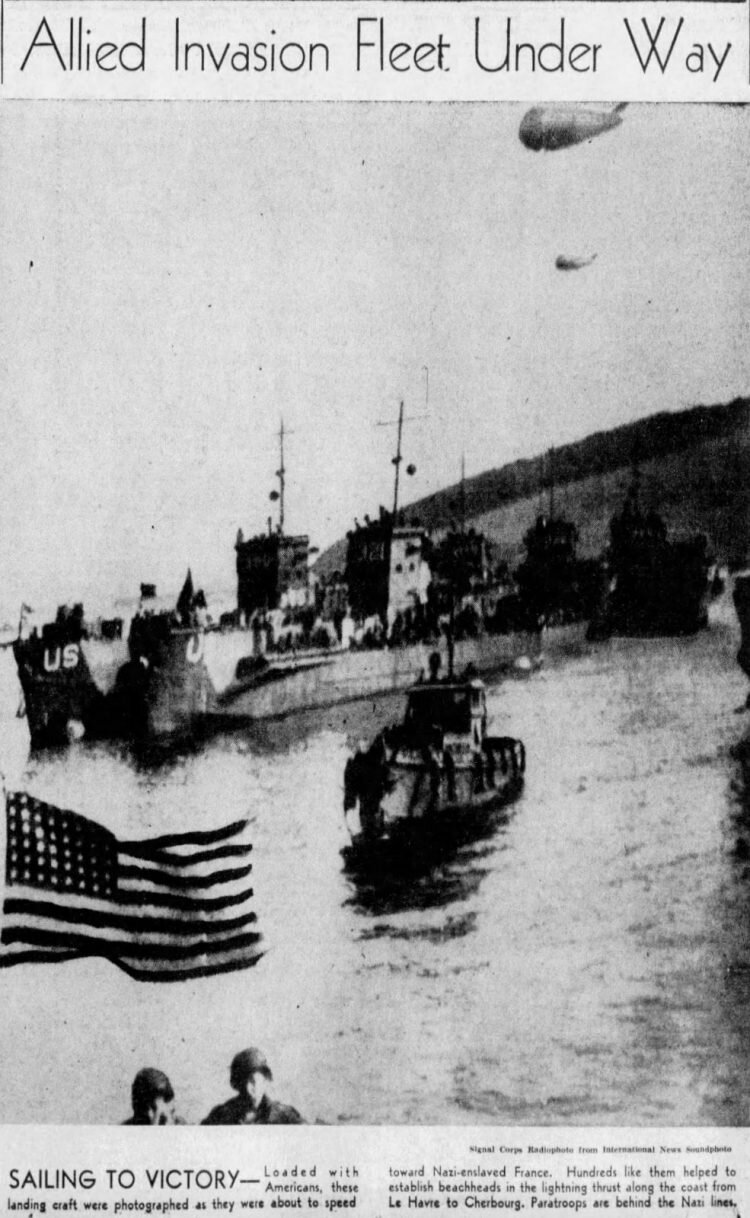
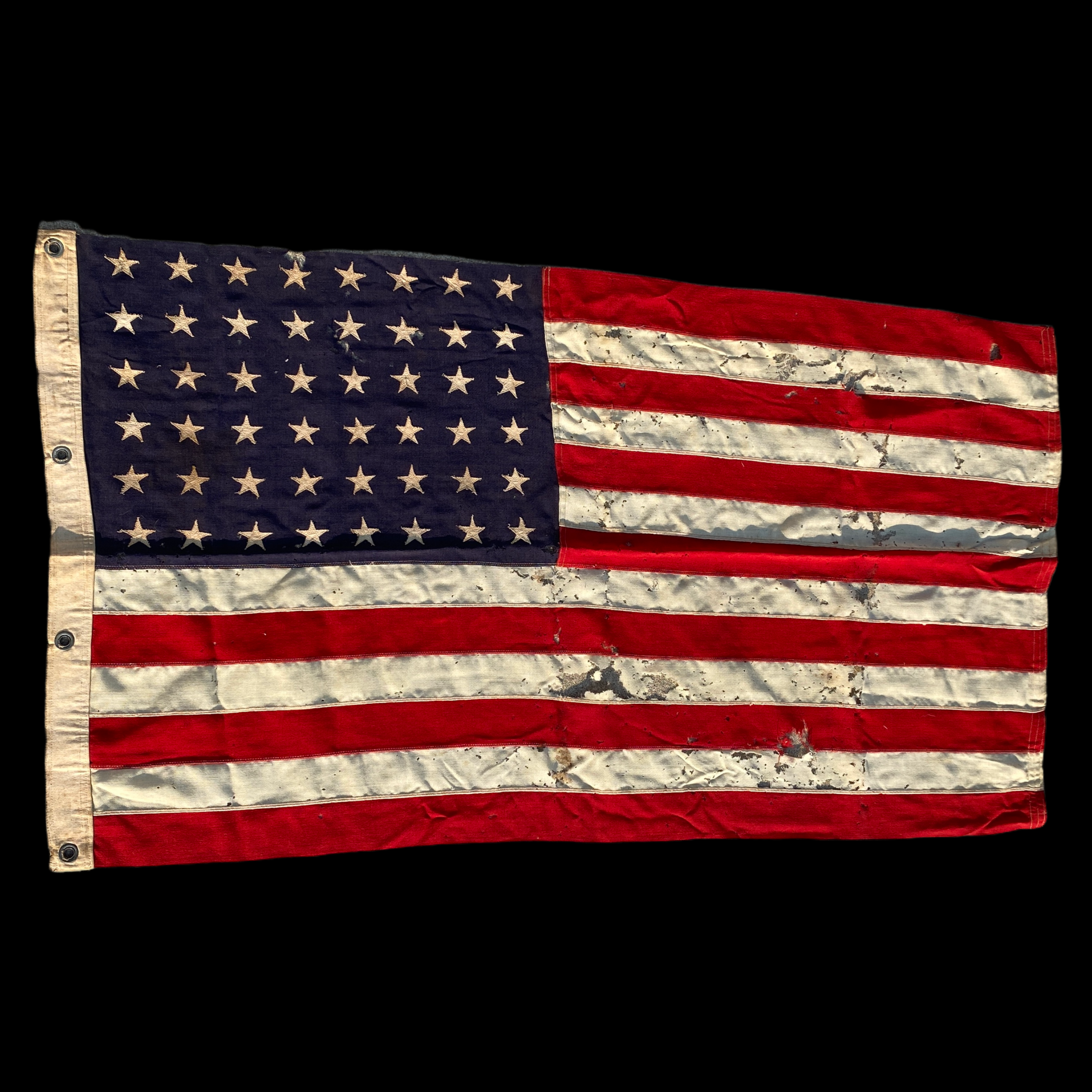

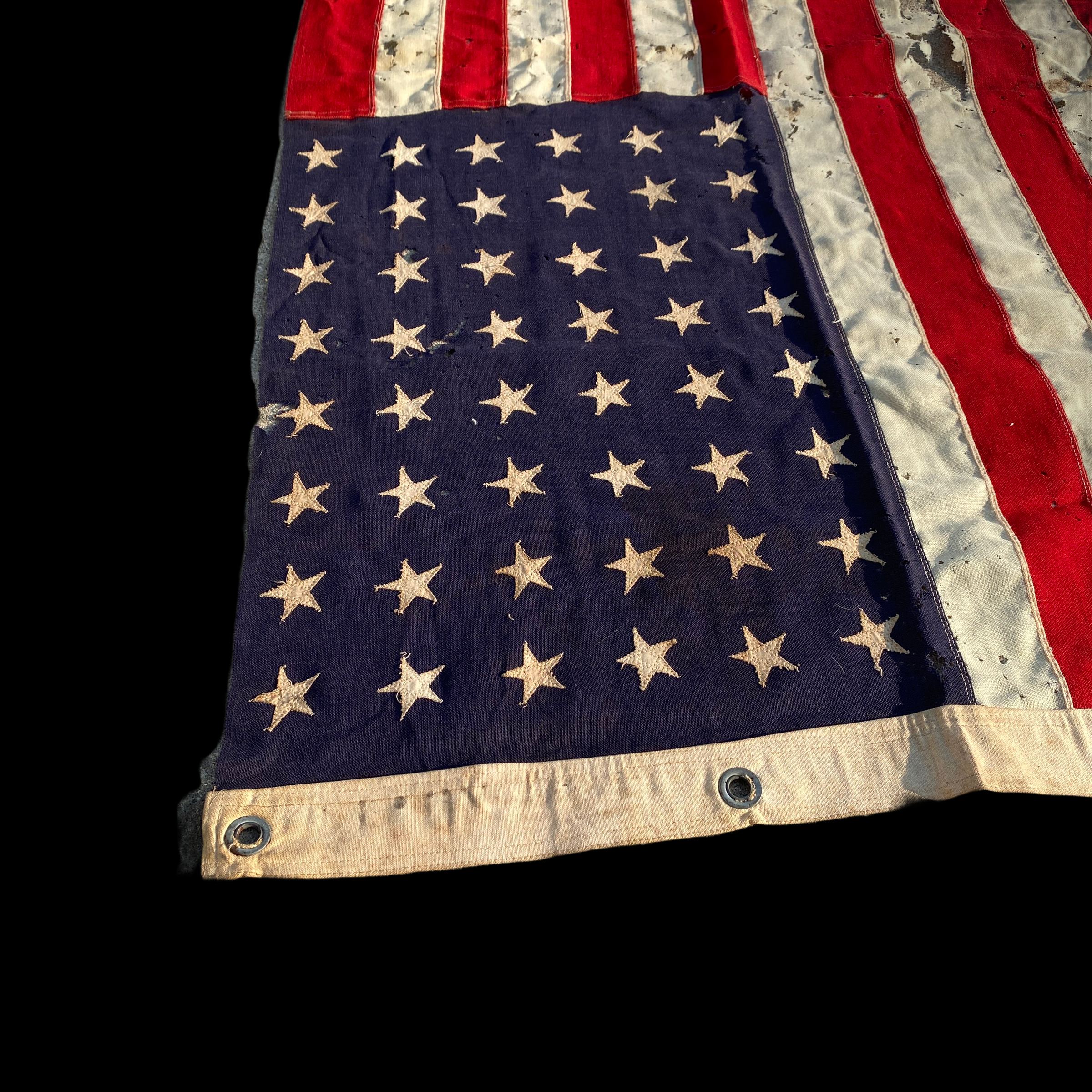
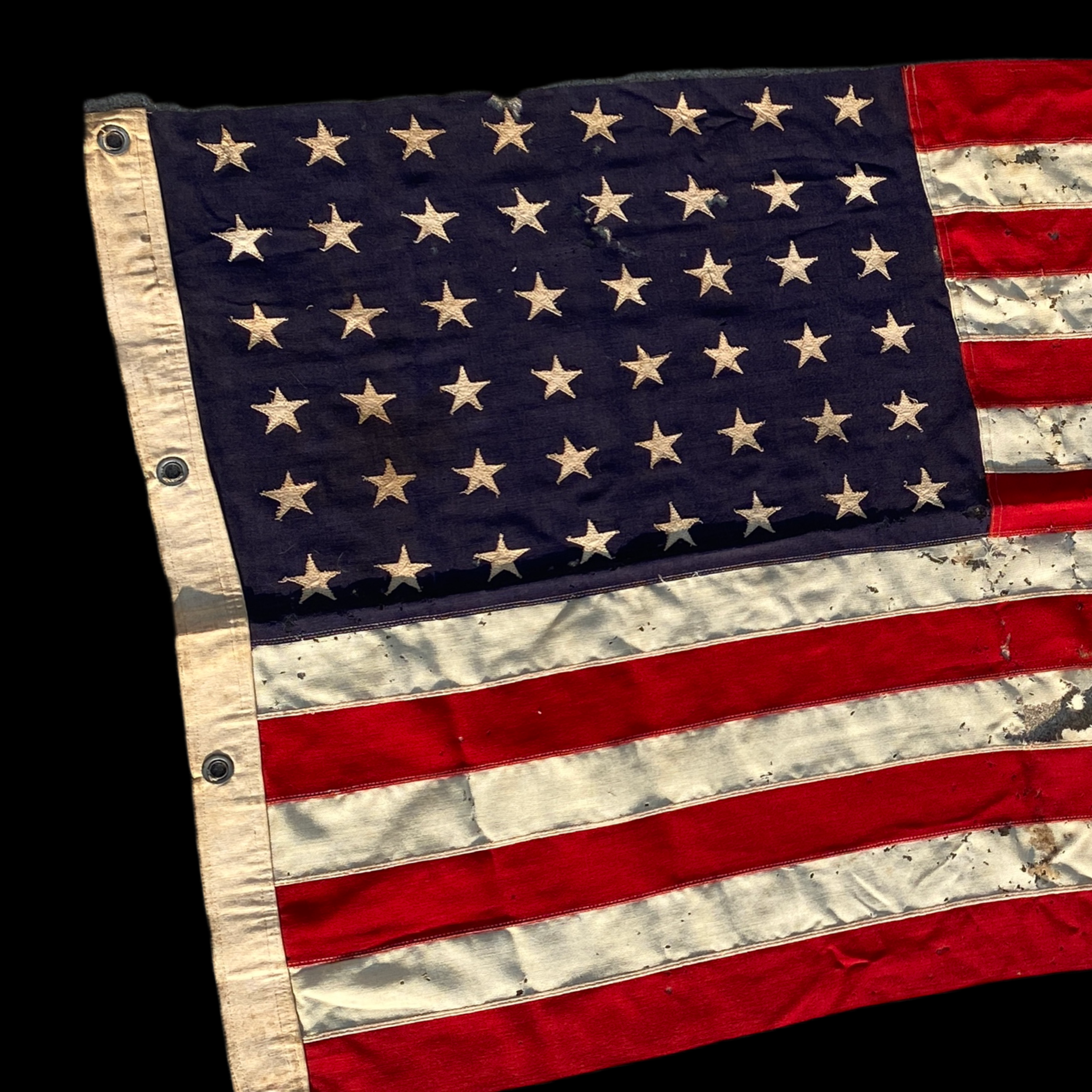
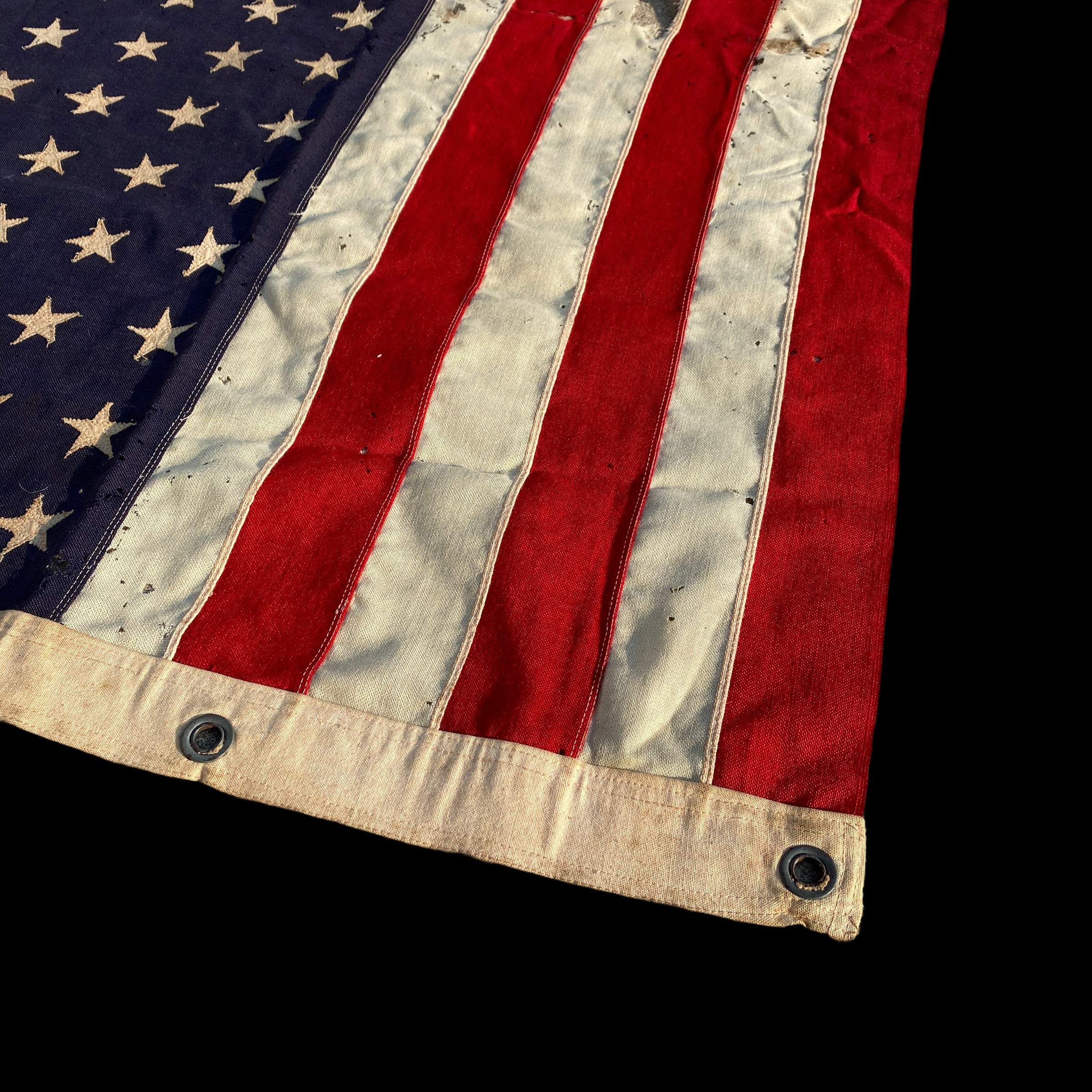

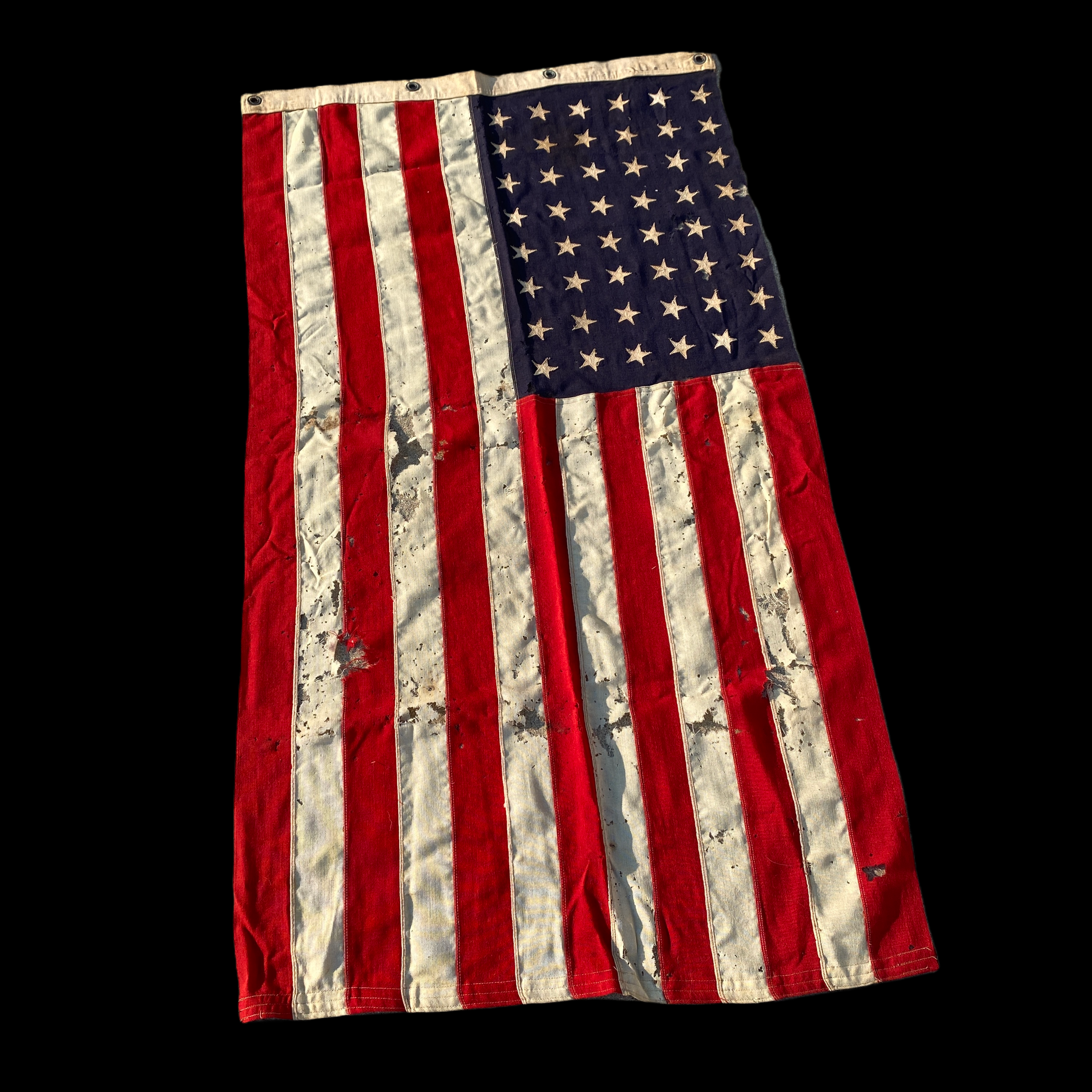
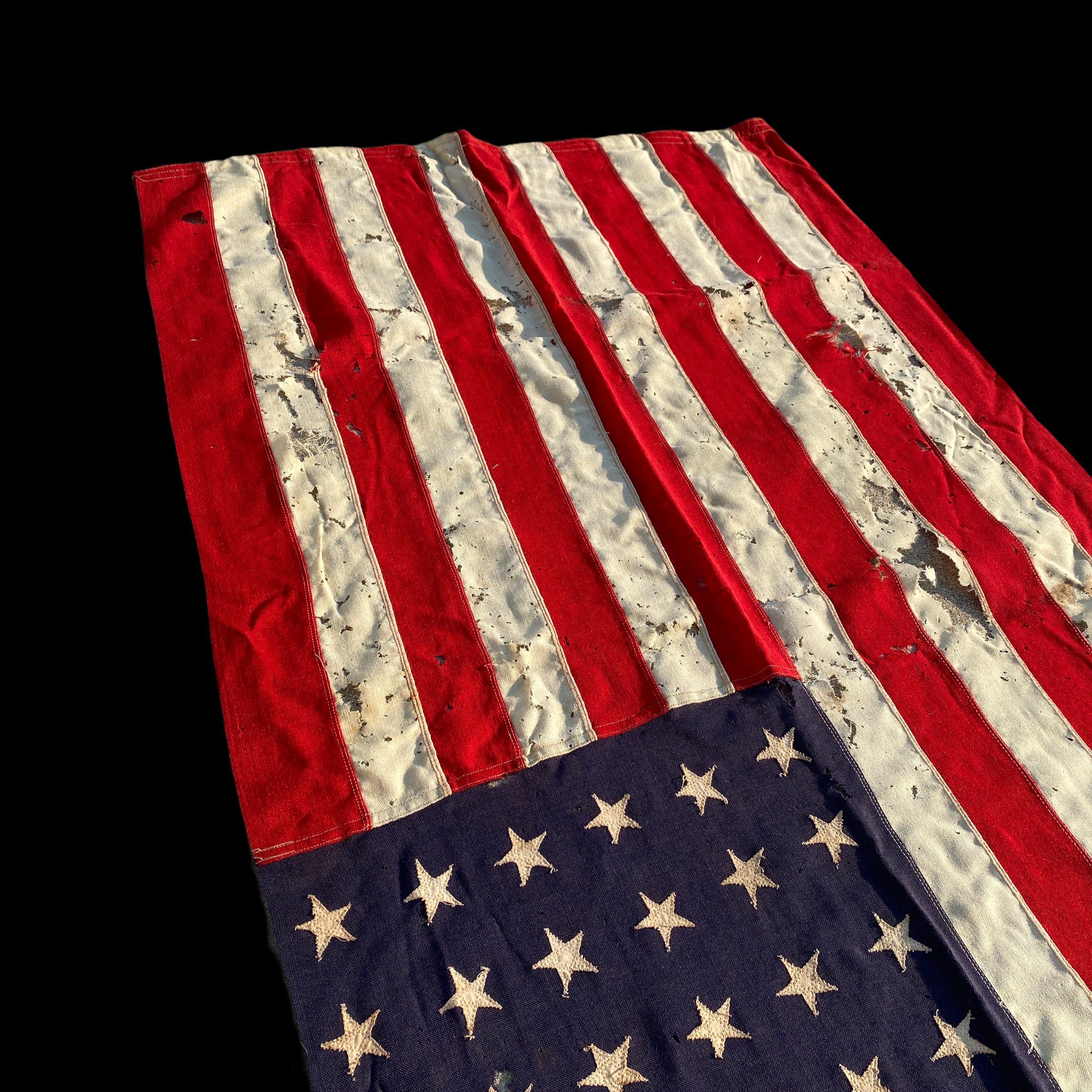






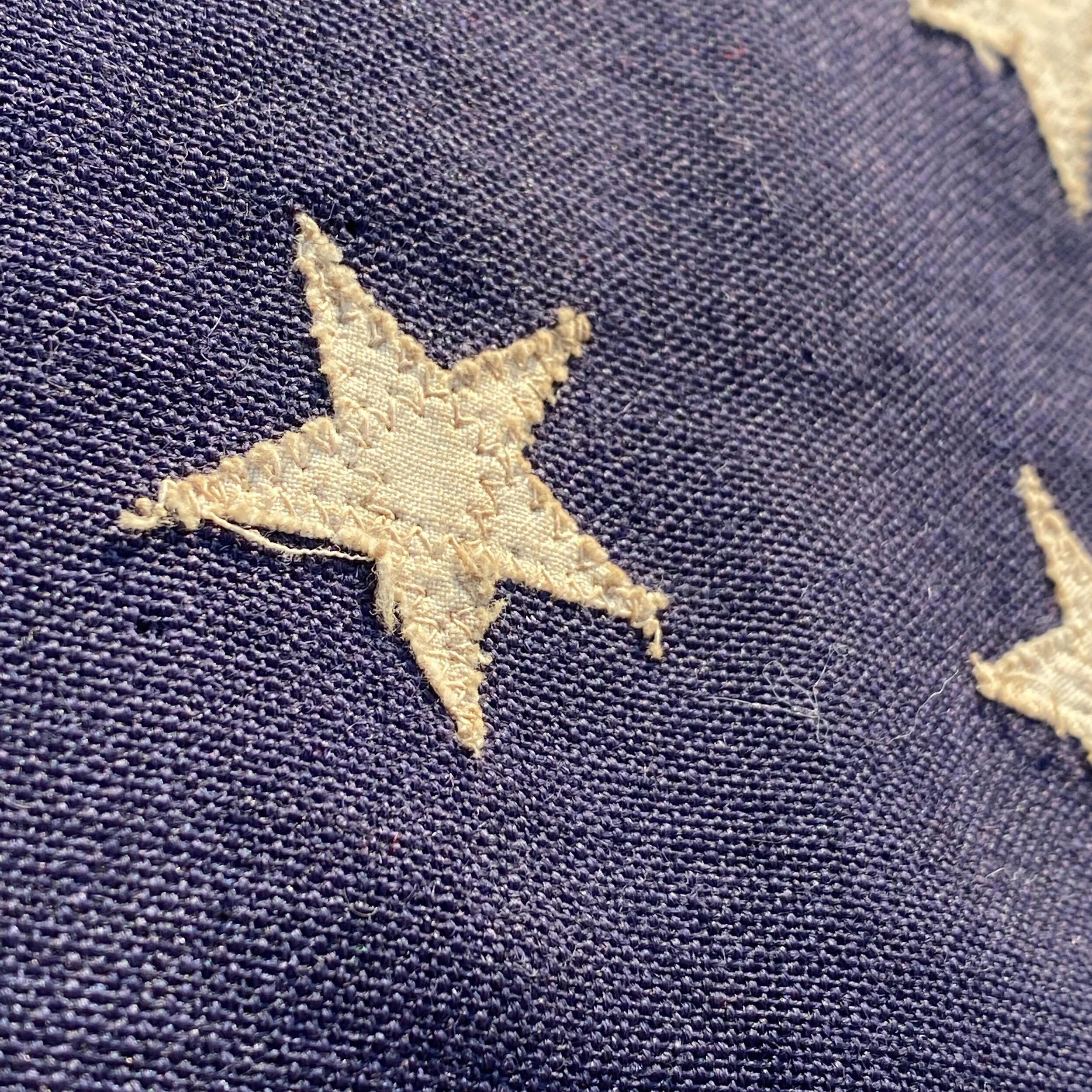
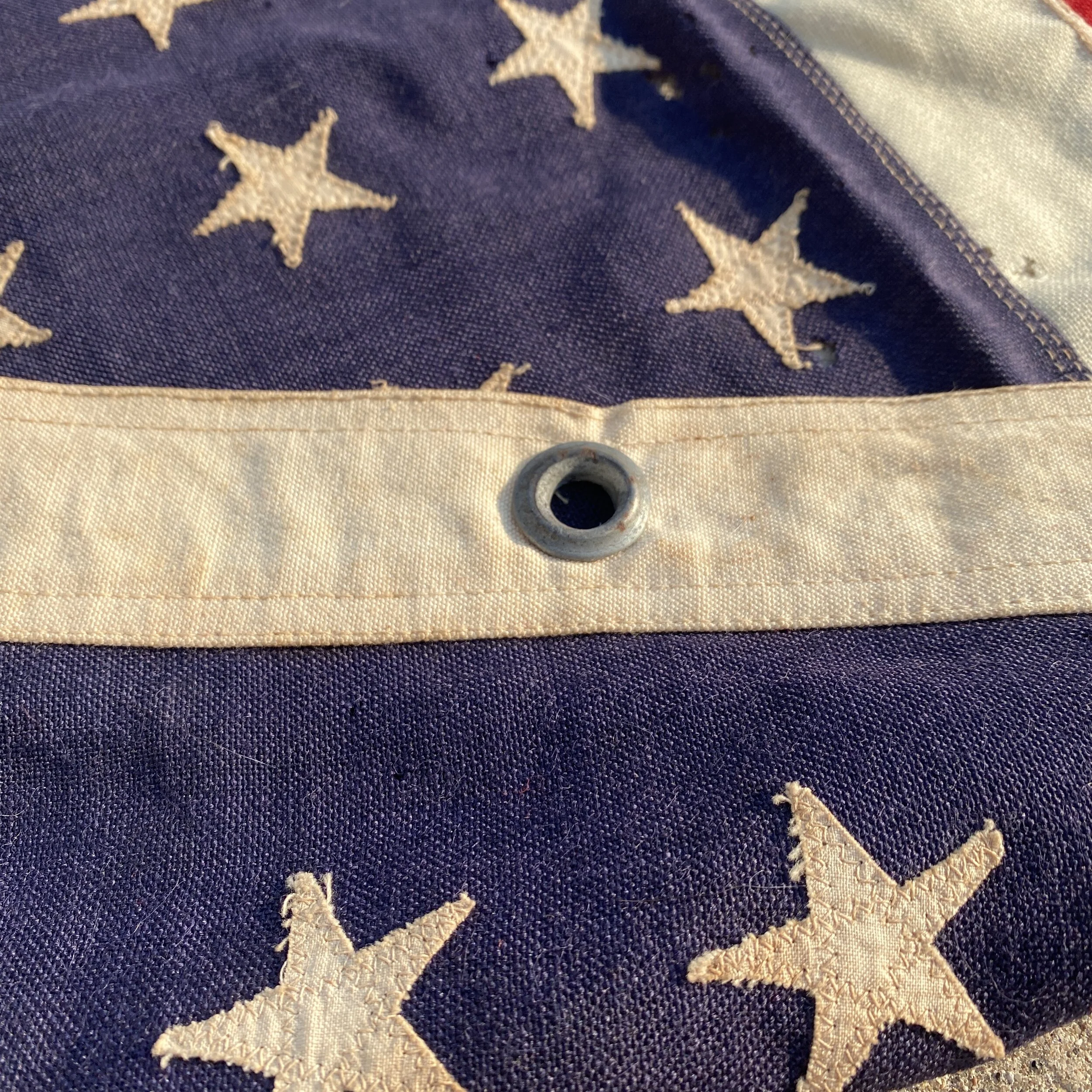
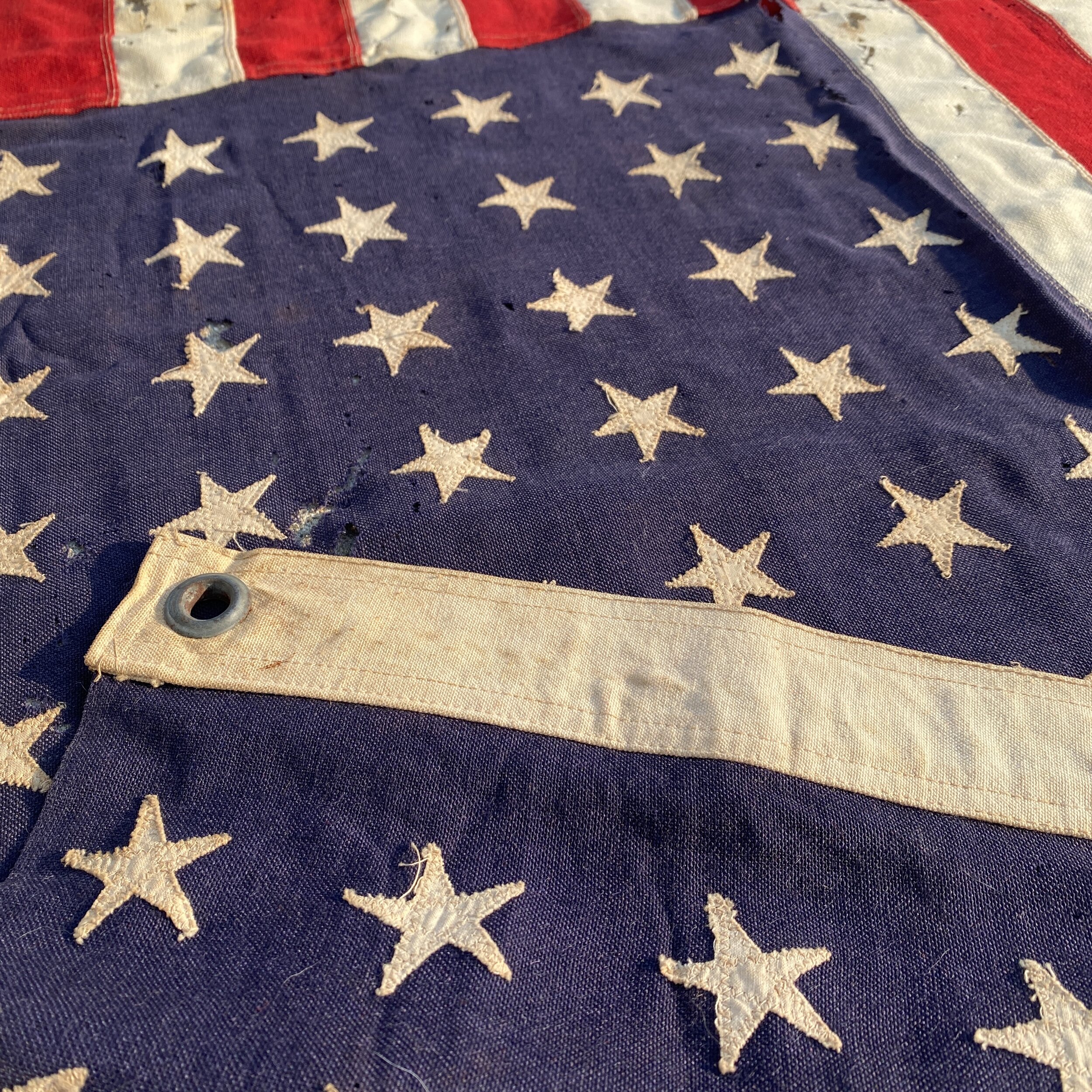

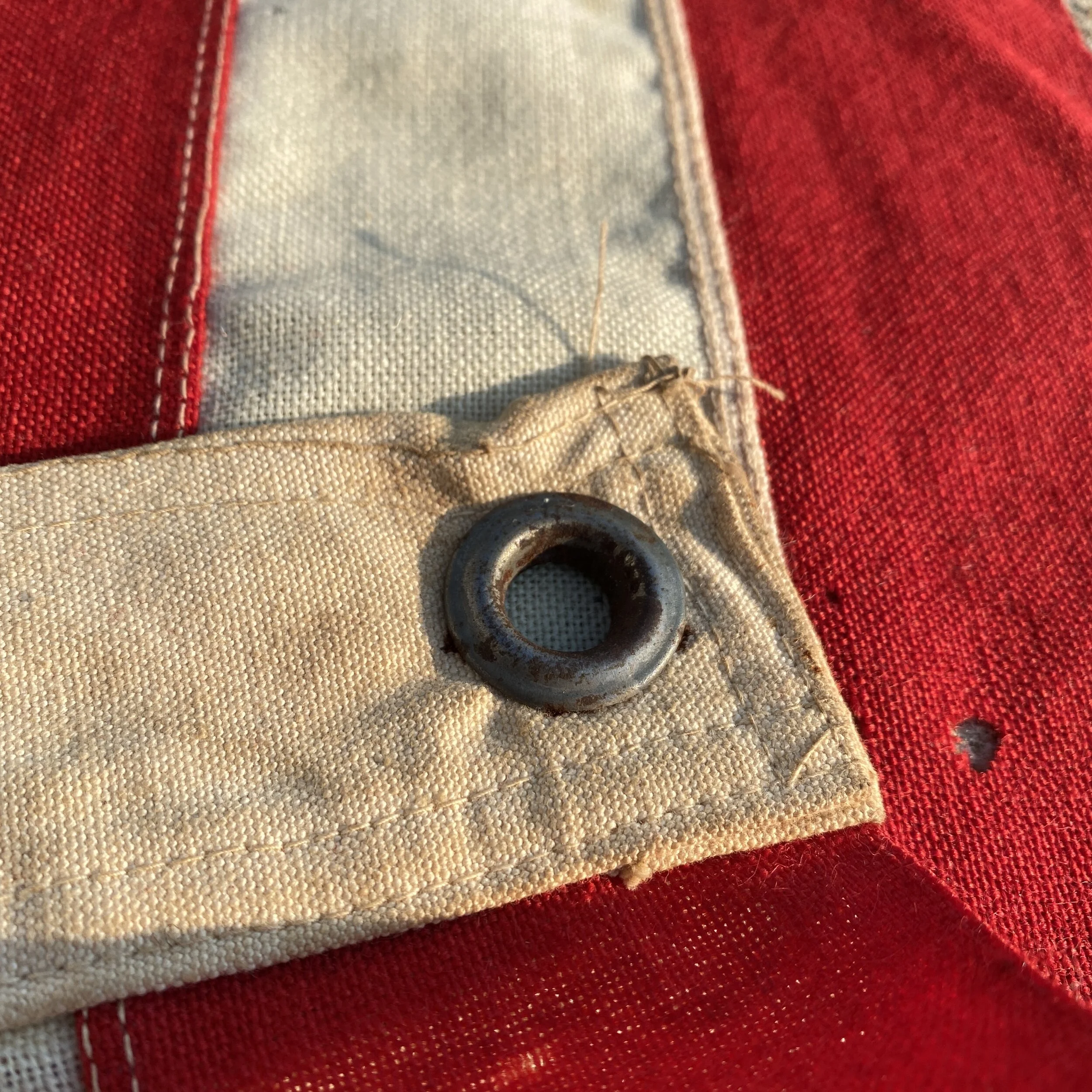
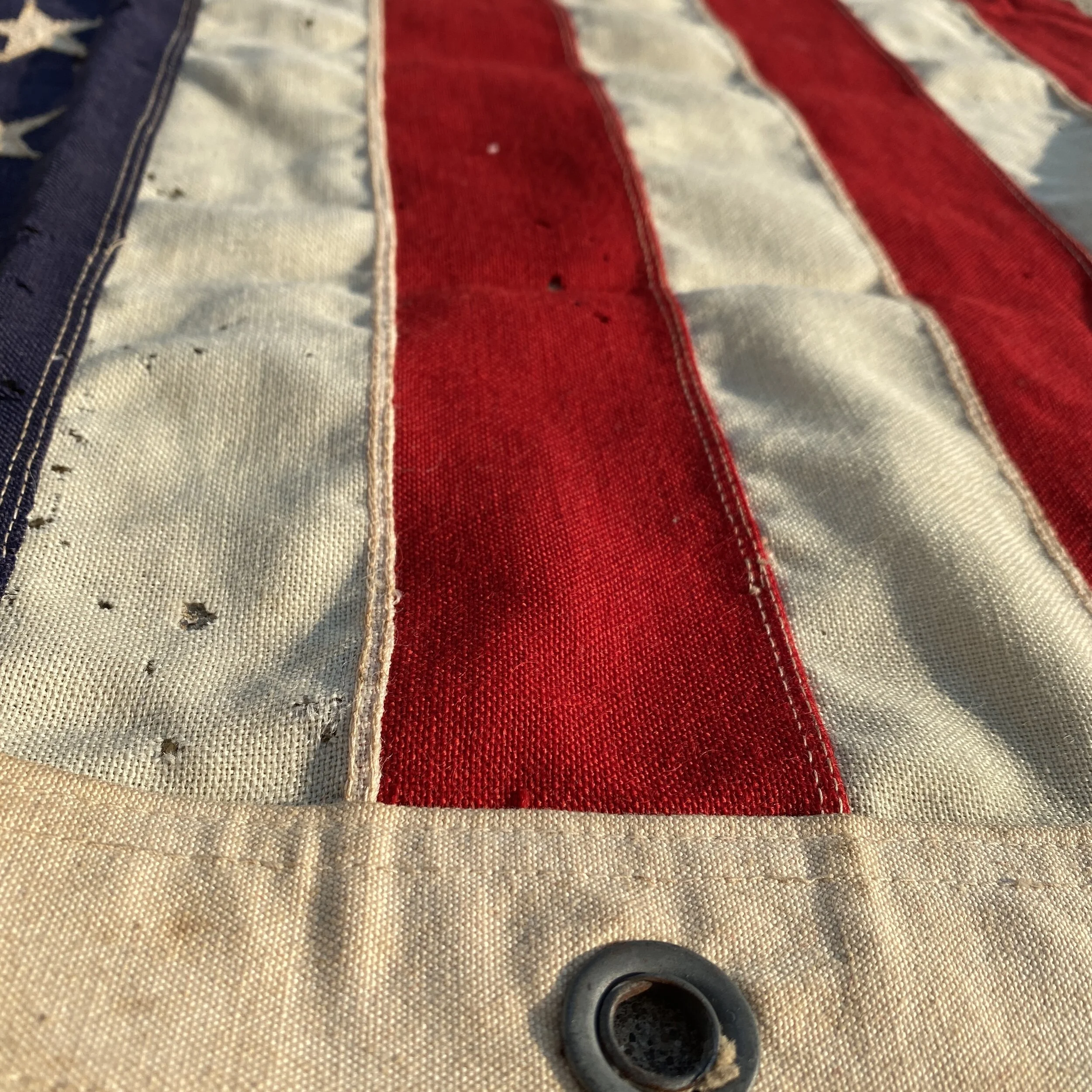





Extremely Rare - 'Salty' Heavy Theater Used Condition - 48 Star Ensign No. 11 Naval LCI Landing Craft Infantry Flag
This ‘salty’ and heavily theater-flown small landing craft (LCI) World War II U.S. Navy flag shows extreme theater use and wear. This flag still clearly shows the original “NO. 11” ink stamp, however, the marker mark stamp Mare Island (MI), or Valley Forge mark is completely faded due to the salty ocean and sun. This flag is the exact NO. 11 flag type that amphibious all WWII landing crafts, LCI, LCT’s, etc. stormed the beaches of Normandy, Italy, Okinawa, Africa, Iwo Jima, etc. with as well as other beachheads in both the ETO and PTO. This flag is from the exact production line of some of the most famous flags seen in some of the most high-end and famous museums including: The World War II American Flag flown on LCT 595, one of the first craft to land at Normandy on June 6, 1944, Ensign Flown from LCI(L)-488 on D-Day at Omaha Beach Landing, LCT 530 (Landing Ship Tank) Took in the Utah beach amphibious landings in Normandy invasion.
*While it cannot be proven…this No. 11 is identical and shows similar “wear” and “holes” in the middle as another WWII No. 11 flag brought back by a WWII veteran. As referenced from WWII veteran in the interview he shows the flag and points the holes and torn marks in the middle talking about how he witnessed German bullets tearing through the flag making these marks on D-Day. We cannot confirm if this is true for this flag, however, the marks are VERY similar.
It is believed this flag is from the 1943 or 1944 production year and comes from either the Valley Forge war production line or Mare Island war production line. Both were some of the most famous and notable flag makers for the military during WWII.
The Mare Island Naval Station in San Francisco Bay was home to what was known as the Pacific Fleet, however, their flags were used throughout all theaters war during WWII. Mare Island’s is highly recognized for providing flags for all of the amphibious assault craft and ships in 1944 for the Normandy landings which were the landing operations and associated airborne operations on Tuesday, 6 June 1944 of the Allied invasion of Normandy in Operation Overlord during World War II. Codenamed Operation Neptune and often referred to as D-Day, it was the largest seaborne invasion in history. The operation began the liberation of France (and later western Europe) and laid the foundations of the Allied victory on the Western Front.
This WWII small landing craft flag is in heavily used and worn condition. Most of the used and worn WWII ENSIGN theater flags were usually taken down and kept by a Navy sailor or GI because it was flown during a major battle and operation or the ship was being damage repaired in a dock and they were kept as war souvenirs. Used landing craft flags from WWII were a very sought after war prizes as talked about by many WWII veterans.
Small handfuls of heavily used NO. 11 landing ship flags have come to market as most are displayed in museums. The NO. 11 type flag type is historically documented as being issued and flown on small landing crafts including LCI (Landing Craft Infantry). The NO. 11 marked flag is one of the most sought-after number (No.) marks by collectors.
Mare Island Naval Shipyard was the first naval base on the west coast of the United States. It is 25 miles northeast of San Francisco, near Vallejo, California. During WWII the base was used for shipbuilding and repair. There were 46,000 workers employed there during the war. It comprised over 900 buildings, and the base closed in 1996. The flag loft employed 500 workers, 400 women doing their part by working 8 hours a day 6 days a week.